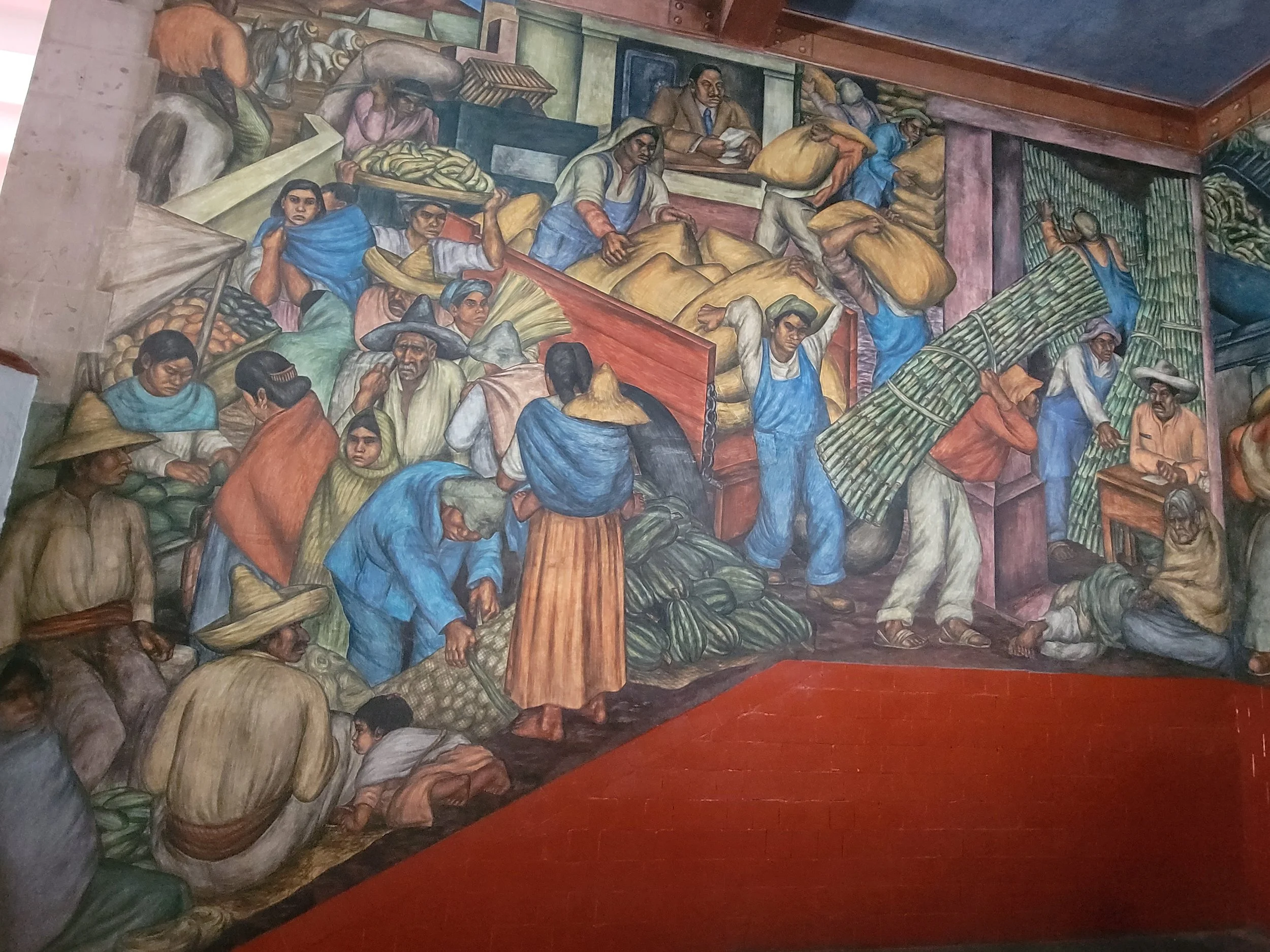Traveling to Mexico City - CDMX
*Please note that the details provided below are solely for informational purposes.
Mexico City is known for its museums, the colonial architecture, the cuisine which varies from street food to fine dining, one of the largest Zócalos in the world, as well as many, many green spaces - including Chapultepec park which is one of the largest public parks in the Americas.
One of our favorite things to do when we travel is to find the beauty and unexpected that is hiding in plain sight. Do you want to see the major sites of Mexico City but also find some hidden treasures? Then make sure to wander over to the Abelardo L. Rodriguez market which is located northeast of the Zocalo (main square). As you go through the main entrance stop by one of the vendors to grab atole and a tamale to enjoy while you explore. Don’t rush through the entry halls but instead stop and look up at the walls around you. These murals were painted by students of Diego Rivera in the 1930s and mainly reflect socialist themes and the concerns of the artists during that time period - including the exploitation of workers, the fight against n@zism and fascism, and racial discrimination - make sure to go upstairs to see additional murals including a wall sculpture piece by Isamu Noguchi titled Historia de Mexico.
CDMX was first known as Tenochtitlan, and was the ancient capital of the Aztec Empire c. 1325. The Aztecs built an artificial island on the western side of Lake Texcoco by dumping soil into the lagoon. As the area grew in population, additional artificial islands were created and connected to the mainland by multiple causeways. Tenochtitlan was an organized city with a government, public services, dams, and schools. In 1521, The Spanish conquistadors conquered the Aztecs and destroyed the city and the dams. The Spaniards built the capital of New Spain directly on top of the Aztec ruins and dealt with ongoing flooding of the city. To control the flooding, drains were built to lower the levels of the lake and its feeder system, and at the same time, the Spaniards were also draining Lake Texcoco and the natural aquifers that fed it. As the lake was being drained, they expanded the city by building on the lake bed. The added weight of the city buildings above, an increased drying of the land, and a soft soil lake bed that is vulnerable to breaking its cohesion (loss of strength) during earthquakes, has led us to where we are today which is a city sinking in some areas at a rate of 20 inches per year.
As you walk through the city and particularly in Centro Historico, keep your eyes open for doorways, windows, and walls of buildings that have warped. These signs of sinking land are especially visible as you walk by the Circulo Mexicano Hotel near the Templo Mayor complex on República de Guatemala and the Santa Veracruz Church on Avenue Hidalgo across from Alameda Central.
Street art, muralism, and graffiti is dotted throughout Mexico City. The history of muralism in Mexico began in the 1920s as a way to tell stories and unify the people after the Mexican Revolution. The murals were a means of strengthening cultural identifiers as well as a way to communicate with those who were not able to read and write. In the present day - street art creates an impact and documents an expression, feeling, or social & political message that is meant to stoke thought, introspection, and conversation.
This is just a small piece of what you can see and do in Mexico City. Need more ideas for what to check out when you travel? Fill out the Travel Prep & Research form to schedule a session!
(c) 2023, TripMedRx, Inc.
































